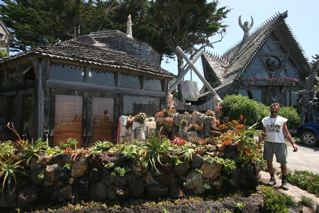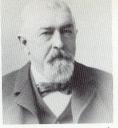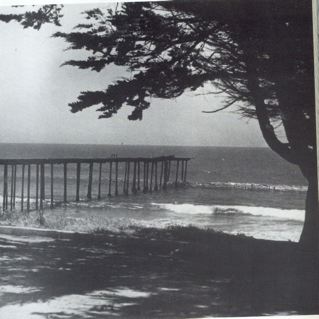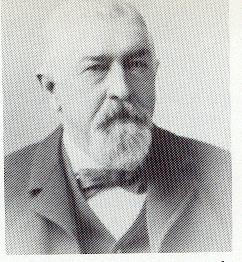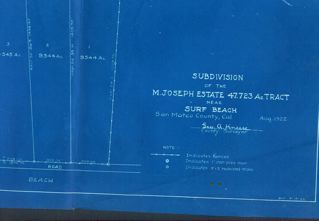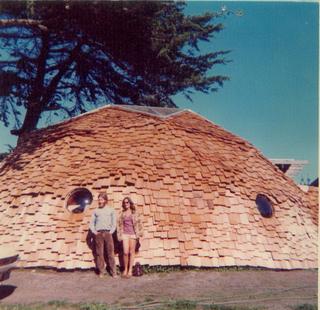Prelude to the âLadies Home Companionâ? by June Morrall

(Photo of Michael Powers, circa 1974, by photographer Dennis Swenson).
In the 1970s, Michael Powers’ Miramar home overlooking the surf was an artistic center of gravity.
Outdoors–that’s where Michael could most often be found–carving designs into massive logs, building a unique and steep stairway down to the beach, hosting community events between an eye-catching A-frame with a concrete statute on top and a more traditional geodesic dome.
Michael climbed the nearby mountains and brought back hefty eucalyptus logs to fashion into a one-of-a-kind curvy staircases. He was (and remains) in superb physical shape, a long beach trot was part of his daily regimen– and one day when an abandoned golden retriever followed me home from the post office, it was Michael who made the dog his pet– a dog that loved the unrestrained beach life as much as his new master.
In the 1970s, there was no one like Michael Powers. Smiling, with arms akimbo, he talked enthusiastically about new projects to other artists and photographers that happened by the high energy “scene.”{ Some of them stayed and helped Michael build the dome and A-frame.)
Michael Powers snapped pictures of the colorful flower- filled fields of Half Moon Bay, his young friends riding horses on the beach and playing in the surf in his front yard. Once a year he and his very gracious brother, Pat, also a photographer, packed up their collection of pictures, jumped into the car and drove to the East Coast to sell the images to the big greeting card companies. The annual trek became a signal for some Coastsiders that the summer was over.
Another high energy âsceneâ? evolved at Bruce Pineâs âPotter Plantationâ? in Half Moon Bay– an older home on Potter Street with an authentic windmill (all still standing in the middle of a cluster of million-dollar subdivision homes). Bruce Pine’s sundeck became famous for the beautiful, nude bodies that graced it.
According to one story Bruce Pine loves to tell, in the 1970s, neighbors within range, took out their binoculars to see who was tanning themselves on the deck that day. They might catch a glimpse of Jerry, Mark, Flower and many others–all basking. Bruce, himself, was often not at home at his Potter Plantation house, business taking him to cities all over the country.
Separated by four miles, the artists and photographers traveled back and forth between the deck at the Potter Plantation and Michael Power’s tabernacle.
….more to come…

